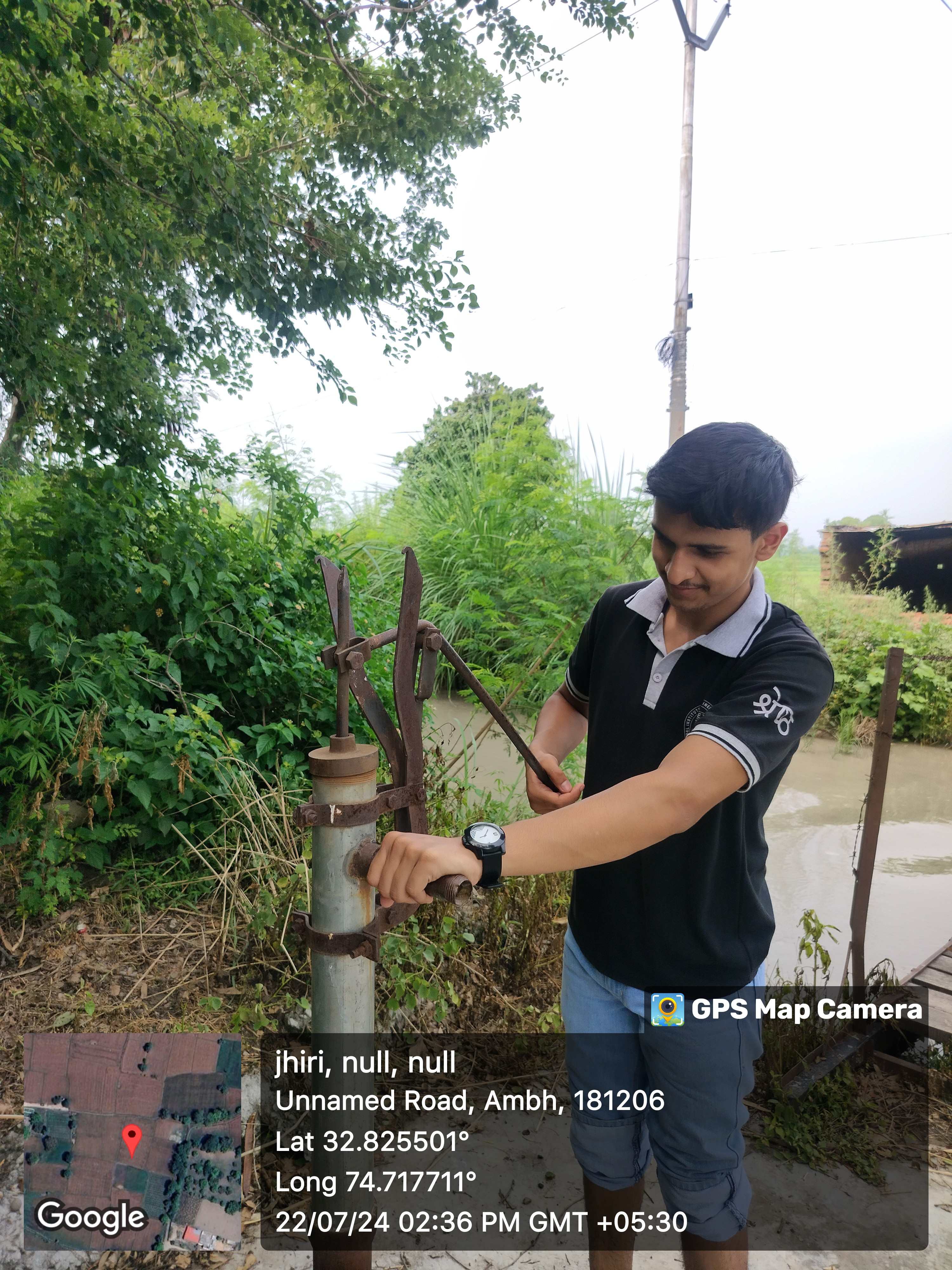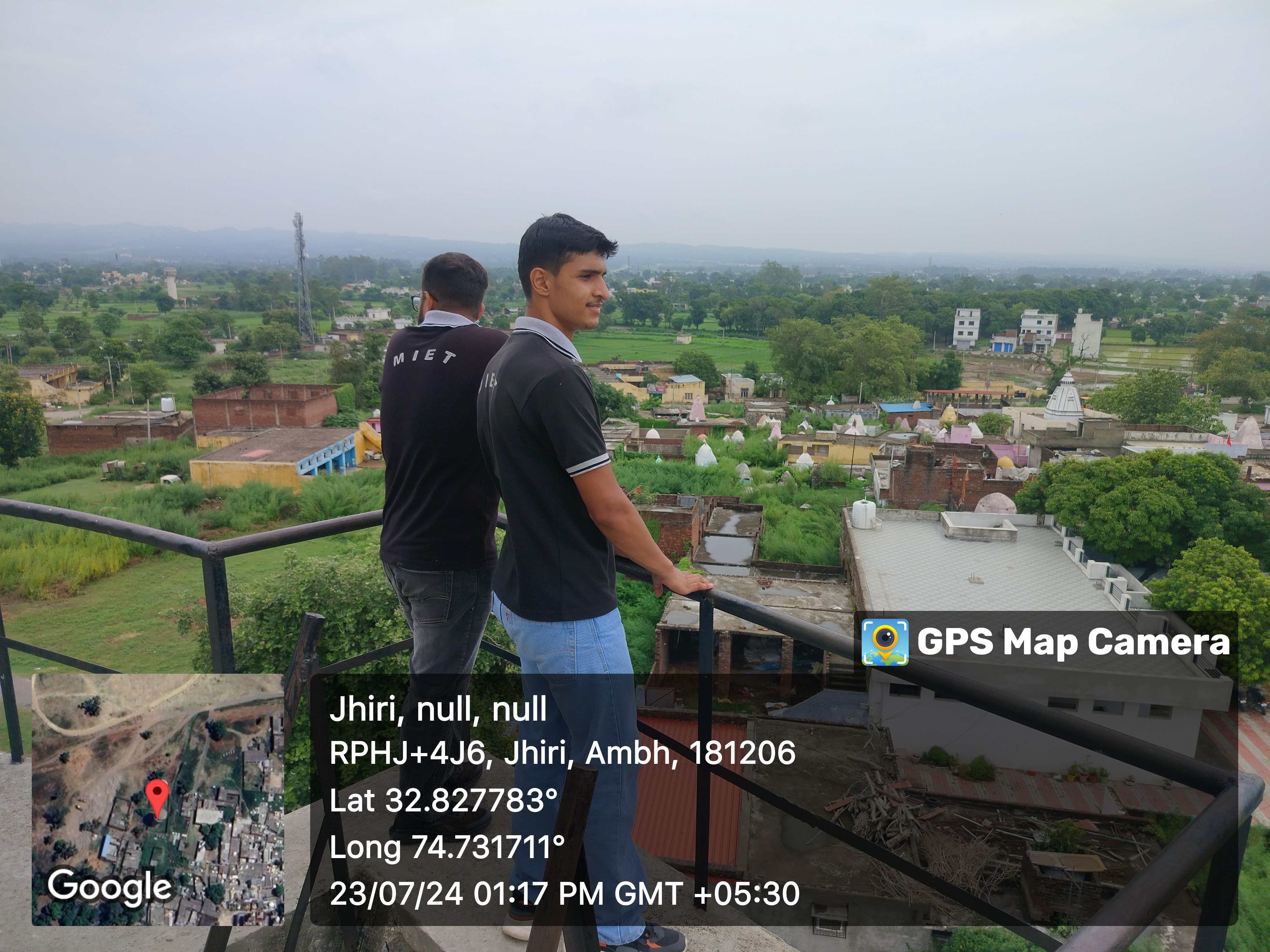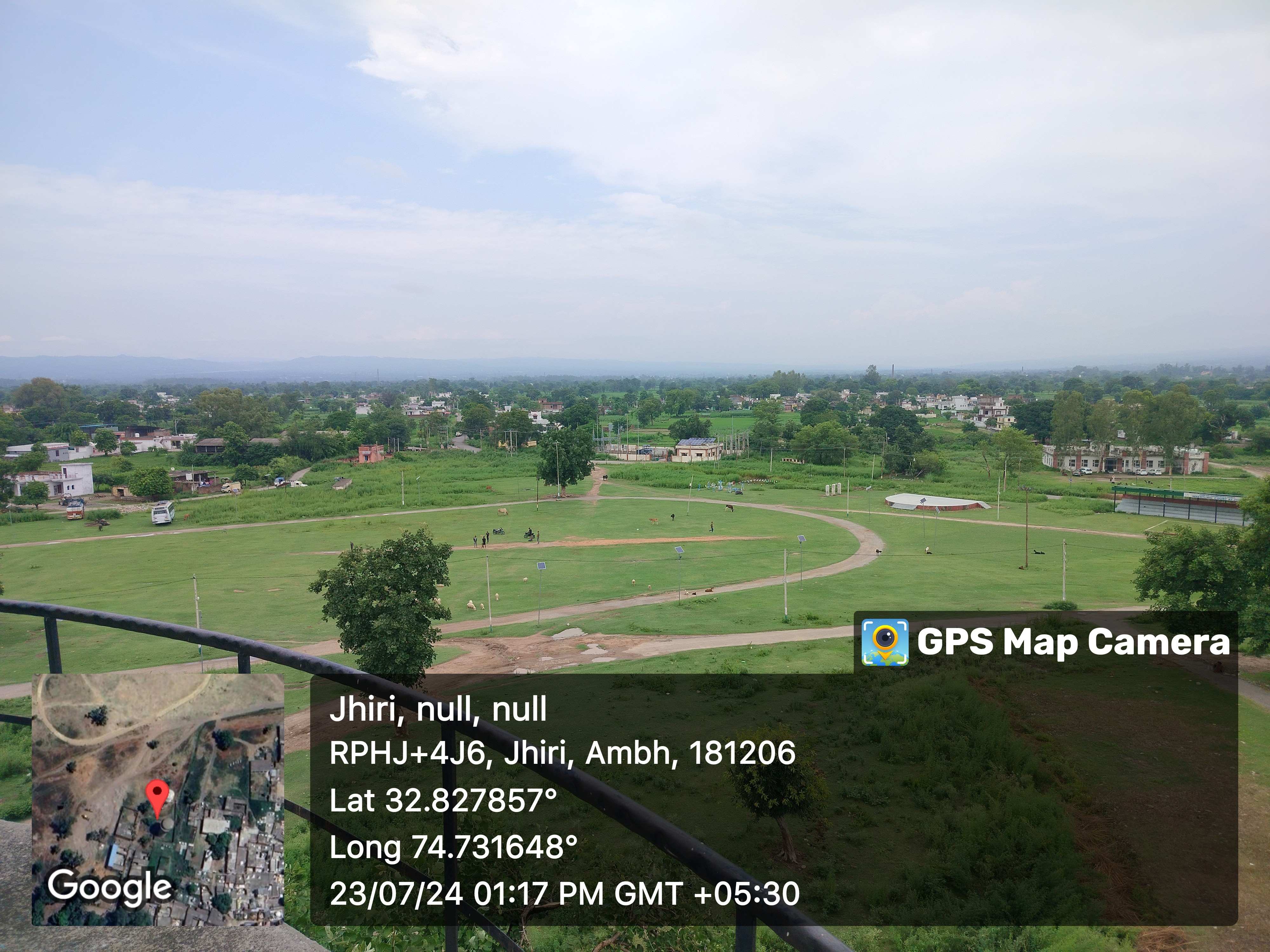Description
Introduction to Dub Dita: A Tapestry of Tradition and History
Dub Dita, a serene village nestled in the picturesque landscapes of Jammu, India, is steeped in history and cultural significance. Known for its association with the legendary Baba Jitto, a symbol of resistance against injustice, the village draws attention for its deep-rooted connection to folk tales and religious significance. The annual Jhiri Mela, a vibrant celebration held nearby, honors Baba Jitto's legacy and showcases the region's rich cultural heritage. The Mela, along with the enduring influence of the Baba Jitto story, plays a vital role in preserving local traditions and religious practices that bind the community together.
Geographical Location and Climate
-
Location: Situated in the Jammu district of Jammu and Kashmir, Dub Dita enjoys a peaceful and scenic atmosphere, making it a hidden gem for nature lovers and pilgrims alike. It lies around 25 km from the city of Jammu, easily accessible by road.
-
Climate: The climate of Dub Dita is characterized by mild winters and hot summers. The summer temperature can reach up to 40°C, while winters remain pleasant, ranging from 5°C to 15°C. The best time to visit is during the spring and autumn months when the weather is favorable for outdoor activities and cultural events.
-
Surroundings: The village is surrounded by lush green grassfields, serene rivers, and picturesque landscapes. These natural elements contribute to a tranquil environment that makes it an ideal place for meditation, reflection, and nature-based activities like hiking and picnics.
Population and Urbanization
-
Rural Idyll: Dub Dita maintains its traditional rural character, with a population engaged primarily in agriculture and animal husbandry. Most of the residents continue to follow age-old practices and lead simple, fulfilling lives.
-
Limited Urban Influence:The village has largely remained untouched by rapid urbanization, retaining its charm and authenticity. The rustic lifestyle is evident in the architecture, farming methods, and daily routines, offering a glimpse into a simpler way of life that is gradually disappearing from other parts of the world.
Cultural Heritage
-
Jhiri Mela: The Jhiri Mela is the cornerstone of the region’s cultural heritage. Held annually, this festival draws thousands of pilgrims and tourists, with its focus on the life and sacrifices of Baba Jitto. It is an event marked by vibrant processions, devotional songs, folk dances, and rituals that honor the legendary figure.
-
Key Attractions: During the Mela, visitors can experience the richness of local culture through folk music, traditional dances like the Dogri Natti, and the sale of handcrafted goods. The local handicrafts—ranging from woolen shawls to pottery—represent the craftsmanship that has been passed down through generations.
-
Religious Significance: The festival also holds immense religious importance. Devotees believe that participating in the Mela and praying at Baba Jitto’s shrine will bring blessings and prosperity to their lives.
-
Folklore and Traditions: The region is rich in folklore, with tales of bravery, love, and devotion passed down through generations.
Historical Account
-
Baba Jitto's Legacy: Baba Jitto's legacy is deeply embedded in the history of Dub Dita. His story is that of a humble farmer who, after facing oppression from a corrupt landlord, chose to end his life rather than live in humiliation. His ultimate sacrifice is seen as an act of defiance against injustice. The story, which continues to inspire, is celebrated annually during the Jhiri Mela.
-
Ancient Roots: Dub Dita and its surrounding areas are rich in historical significance, with evidence of ancient civilizations found in nearby archaeological sites. The area was historically known for its strategic importance and played a role in trade and military history.
-
Oral Traditions: Baba Jitto's tale is that of an honest farmer in Jammu who, after a cunning landholder who took away a larger share of his produce, decided to end his life rather than live with such humiliation. In his ultimate act of defiance, Baba Jitto plunged a knife into the ripe crops crying out to Goddess Vaishno Devi to bear witness of his injustice. Through his struggle divine power was invoked and fairness returned as always did with the promise of truth. The most important aspect of the tale however is the message of upholding one's principles in the face of wrongful oppression and the spirit of fighting for justice regardless of the costs incurred.
-
Traditional Practices: Traditional practices around stories like Baba Jitto include folk performances where songs and narratives bring the tale to life. Festivals, such as the Baba Jitto Mela, commemorate his sacrifice with devotion and rituals. Street plays and community theater often depict these stories to teach moral lessons. Elders pass down the tales through storytelling circles, preserving cultural values. Devotees visit shrines and offer prayers, honoring Baba Jitto’s legacy of integrity and justice.
Principal Attractions
-
Jhiri Mela: The Mela is not just a religious event, but also a cultural celebration. It attracts people from different parts of Jammu and beyond. Visitors can enjoy a variety of performances, including folk music, dance, and rituals performed by the locals to honor Baba Jitto.
-
Baba Jitto's Shrine: The shrine, dedicated to Baba Jitto, is a significant pilgrimage site for devotees. Located near the village of Jhiri, it draws a steady stream of pilgrims throughout the year, especially during the Mela.
-
Scenic Landscapes: The area surrounding Dub Dita offers breathtaking views of the surrounding grasslands, lakes and rivers, providing ample opportunities for nature lovers and adventure enthusiasts to explore.
Historical and Military Monuments
-
Ancient Forts and Temples: Several ancient forts and temples dot the landscape of Jammu and its surrounding areas, offering a glimpse into the region’s rich historical and military past. These sites also serve as reminders of the strategic significance the region once held.
-
Fort Ruins: Visitors can explore the remnants of ancient fortifications that once served as military outposts during the era of Indian kings and invaders. These ruins provide a fascinating insight into the region’s military history and its role in protecting trade routes.
-
Religious Sites: Numerous temples and shrines are scattered across the region, many dedicated to Hindu deities. These sites are not only religious but also culturally significant, often hosting festivals and religious gatherings.
-
Military Significance: Due to its geographical location, Jammu has historically been a key point for defense. The region’s military sites reflect its importance in Indian history and the various dynasties that ruled here.
Best Time to Visit
-
Autumn (October-November): The Jhiri Mela, held during the autumn months, is the best time to visit as it allows visitors to experience the region’s cultural vibrancy at its peak.
-
Spring (March-April): The weather is mild, making it ideal for exploring the countryside and visiting historical sites.
Gastronomy: Local Cuisine
-
The region's cuisine is rich in flavor and diversity, often featuring locally grown ingredients. Dogra cuisine includes a variety of hearty and flavorful dishes like Rajma Chawal, Madra, Rogan Josh, and Khatta.
-
Signature Dishes: Rajma Chawal (rice and kidney beans) and Madra (a yogurt-based curry) are staples in the Dogra diet.
-
Street Food: The Jhiri Mela offers a variety of street food, including local favorites like Kulcha, Chole Bhature, and Momos.
-
Local Snacks: The region is also known for its traditional snacks, such as Aloo Tikki, Samosas, and Chana Chaat.
Village Lifestyle and Values
-
Community-Oriented: The people of Dub Dita live in close-knit communities, where everyone knows each other and lends support in times of need.
-
Respect for Tradition: Traditional values are highly respected, with festivals, rituals, and community gatherings reinforcing the collective identity of the village.
-
Simple Living: The villagers lead a modest lifestyle, relying on agriculture, animal husbandry, and traditional crafts as their main sources of livelihood.
Economic Activities
-
Agriculture: Dub Dita’s economy is primarily based on agriculture, with crops like wheat, rice, maize, and pulses being grown. The fertile land is ideal for farming, and many locals still rely on traditional methods of cultivation.
-
Handicrafts: The region is also known for its traditional handicrafts, including pottery, weaving, and wood carving. These handicrafts are often sold at local markets and contribute to the local economy.
-
Tourism: With the popularity of the Jhiri Mela and its spiritual significance, tourism has become an important source of income for the area. Local businesses and homestays cater to the influx of pilgrims and tourists during the festival season.
Accommodation and Connectivity
Accommodation:Visitors can choose from a range of accommodations, including local homestays that offer an authentic experience of village life, guest houses, and hotels in Jammu city for more comfort. For nature enthusiasts, camping in the nearby hills offers a unique adventure.
-
Local Homestays: Experience authentic village life by staying with local families.
-
Guest Houses and Hotels in Jammu: For more comfortable accommodations, consider staying in Jammu city and taking day trips to Dub Dita and Jhiri.
Connectivity:
-
Road: The village is easily accessible by road from Jammu, with regular bus services connecting the region.
-
Rail: The nearest railway station, Jammu Tawi, offers convenient access, from where taxis and buses can be hired.
-
Air: Jammu Airport, located nearby, in satwari is well connected to major Indian cities and is the nearest airport to Dub Dita.
Local Festivals and Events
Apart from the Jhiri Mela, the region hosts several other festivals and events throughout the year.
-
Navratri: A nine-day festival celebrated with great fervor, featuring colorful processions, devotional songs, and cultural performances.
-
Diwali: The festival of lights, celebrated with enthusiasm, involves lighting diyas, bursting crackers, and exchanging sweets.
-
Lohri: A winter solstice festival celebrated with bonfires, folk songs, and traditional dance performances.
Shopping and Souvenirs
-
Local Markets:Explore vibrant local markets where traditional goods, including woolen shawls, pottery, wooden carvings, and embroidered textiles, are sold.
-
Handicraft Shops: Pick up unique handmade products that reflect the artistic traditions of the region.
Tips for Visiting Dub Dita and Jhiri
-
Best Time to Visit: The ideal time is from October to March, when the weather is pleasant and the cultural activities are in full swing.
-
Respect Local Customs: Dress modestly and be respectful of local customs and traditions.
-
Carry Essentials: Pack comfortable clothing, sunscreen, a hat, and insect repellent.
-
Hire a Local Guide: A local guide can provide insights into the history, culture, and traditions of the region.
-
Try Local Cuisine: Indulge in delicious Dogra cuisine and street food.
-
Capture Memories: Carry a camera to capture the beautiful landscapes and cultural experiences.
By following these tips, you can make the most of your visit to Dub Dita and Jhiri, creating unforgettable memories.
Photos
Location Map
Contact Information
| Address |
Dub Dita, |
| Phone Number |
9149835940 |
| Website | https://jkpanchayat.jk.gov.in/homeview.php?panchayat=Panjore&block=Marh |





















